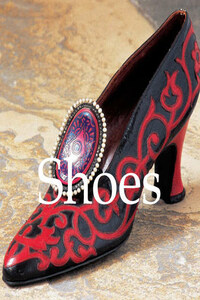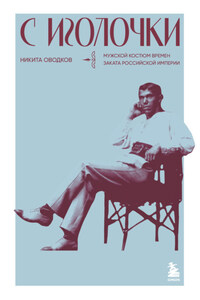Seducta shoe, 1954
International Shoe Museum, Romans
Aside from noticing a shoe for its comfort or elegance, contemporaries rarely take interest in this necessary object of daily life. However, the shoe is considerable in the history of civilization and art.
In losing contact with nature, we have lost sight of the shoe’s profound significance. In recapturing this contact, in particular through sports, we begin its rediscovery.
Wooden sandal inlayed with gold, treasure of Tutankhamen
18th Dynasty
Thebes
Cairo Museum, Cairo
Shoes for skiing, hiking, hunting, football, tennis or horse-riding are carefully chosen, indispensable tools as well as revealing signs of occupation or taste.
In previous centuries, when people depended more on the climate, vegetation and condition of the soil, while most jobs involved physical labor, the shoe held an importance for everyone which today it holds for very few.
Egyptian sandal made of plant fibers
Bally Museum, Schönenwerd, Switzerland
We do not wear the same shoes in snow as in the tropics, in the forest as in the steppe, in the swamps as in the mountains or when working, hunting or fishing. For this reason, shoes give precious indications of habitats and modes of life. In strongly hierarchical societies, organized by castes or orders, clothing was determinant.
Sandals
Found in the fortress of Massada
Princesses, bourgeoisie, soldiers, clergy and servants were differentiated by what they wore. The shoe revealed, less spectacularly than the hat, but in a more demanding way, the respective brilliance of civilizations, unveiling the social classes and the subtlety of the race; a sign of recognition, just as the ring slips only on to the most slender finger, the “glass slipper” will not fit but the most delicate of beauties.
Iron shoe
Syria, 800 BC
Bally Museum, Schönenwerd, Switzerland
The shoe transmits its message to us by the customs which impose and condition it. It teaches us of the deformations that were forced on the feet of Chinese women and shows us how in India, by conserving the unusual boots, the nomadic horsemen of the North attained their sovereignty over the Indian continent; we learn that ice-skates evoke the Hammans while babouches suggest the Islamic interdiction to enter holy places with covered feet.
Silver sandal
Byzantine period
Bally Museum, Schönenwerd, Switzerland
Sometimes the shoe is symbolic, evoked in ritual or tied to a crucial moment of existence. One tells of the purpose high-heels served: to make the woman taller on her wedding night in order to remind her that it is the only moment when she will dominate her husband.
The boots of the Shaman were decorated with animal skins and bones in order to emulate the stag; as the stag, he could run in the world of spirits.
Man’s slipper
Vamp decorated with motifs gilded with gold leaf
Egypt, Coptic era
International Shoe Museum, Romans
We are what we wear, so if to ascend to a higher life it is necessary to ornate the head, if it becomes an issue of ease of movement, it is the feet that are suited for adornment. Athena had shoes of gold, for Hermes, it was heels. Perseus, in search of flight, went to the nymphs to find winged sandals.
Liturgical shoe of plain embroidered samite
Spain, 12th century
Silk and gold thread
Textile Museum, Lyon
Tales respond to mythology. The seven-league boots, which enlarged or shrank to fit the ogre or Tom Thumb, allowed them both to run across the universe. “You have only to make me a pair of boots,” said Puss in Boots to his master, “and you will see that you are not so badly dealt as you believe.”
Poulaine style shoe
Bally Museum, Schönenwerd, Switzerland
Does the shoe therefore serve to transcend the foot, often considered as the most modest and least favored part of the human body? Occasionally, without a doubt, but not always. The barefoot is not always deprived of the sacred and, thus, can communicate this to the shoe. Those who supplicate or venerate the shoe are constantly throwing themselves at the feet of men; it is the feet of men who leave a trace on humid or dusty ground, often the only witness to their passage.
Poulaine
Bally Museum, Schönenwerd, Switzerland
A specific accessory, the shoe can sometimes serve to represent he who has worn it, who has disappeared, of whom we do not dare to retrace the traits; the most characteristic example is offered by primitive Buddhism evoking the image of its founder by a seat or by a footprint.
Man’s shoe in black distressed leather upturned pointed toe, studded soul, claw heel
Persia, 15th-16th century
International Shoe Museum, Romans
Made of the most diverse materials, from leather to wood, from fabric to straw, or whether naked or ornamented, the shoe, by its form and decoration, becomes an object of art. If the form is sometimes more functional than esthetic, the design of the cloth, the broidery, the incrustations, the choice of colors, always closely reveal the artistic characteristics of their native country.










